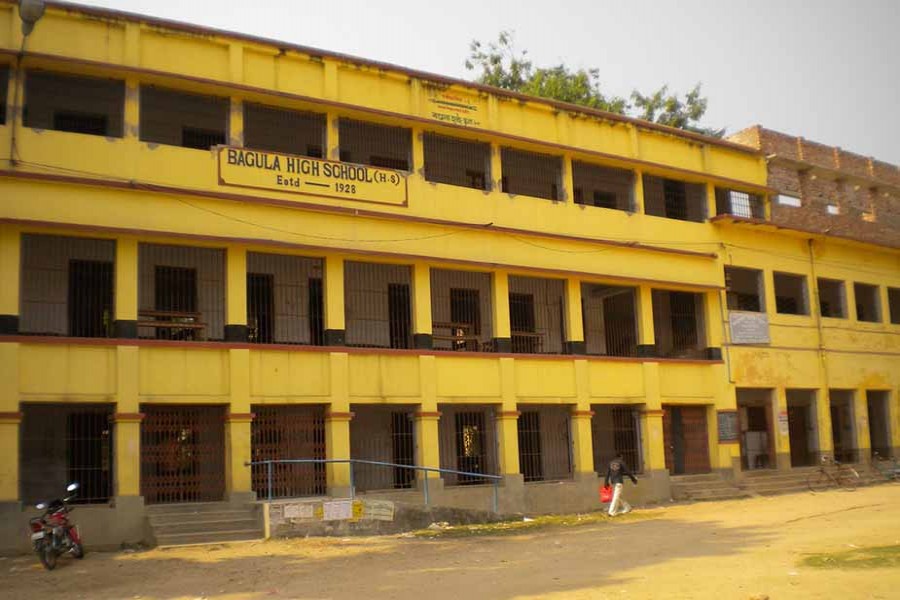The number of 'very good' secondary schools the country currently has stands at 1,618. This is less than 10 per cent of the total. In the next category, good schools i.e, are 9,367 in total. These are followed by 6,344 medium standard schools. On the other hand, the numbers of poor quality schools placed after A, B and C categories in D and E categories are 1,058 and 28 respectively. The schools belonging to the last category are completely non-performing.
Here is a picture of the country's secondary schools that emerges from a survey evaluation conducted by the Directorate of Secondary and Higher Education (DSHE) on the basis of self-assessed information provided by the headmasters of 18,415 secondary schools. Educationists are of the opinion that the system of evaluation followed here is nothing different from similar exercises done in the developed world. The problem, though, lies elsewhere. In Western developed countries, heads of educational institutions can be relied on for the information they provide. Unfortunately, the same cannot be said about teachers here at the helm of affairs of similar educational institutions. The tendency on most of their part is to show their institutions in a positive light and bloated manner. So, there is nothing to be surprised if information is manipulated in order to receive a better evaluation than they really deserve.
Allegations have it that a few controversial and blacklisted educational institutions have been included in the A category. Details of how this could be done are not available. But the process involves scrutiny at different stages. First, the information provided by headmasters are scrutinised by education officers at upazila and district levels. Then a panel comprising people from the DSHE and the Secondary Education Sector Development Programme makes a summary of the evaluation on the analysis of information available. Here the grey area lies between the school authorities and the upazila education offices, where information may perhaps be manufactured suiting to the special need of stakeholders. This may as well happen in later stages if some people take recourse to questionable practices in order to change information.
Even then it is impossible to pass a poor quality school as one among those in the top category. The seven indicators and 45 sub-indicators hardly leave enough scope for wide-scale manipulation. For example, if a school shows that it has nice environment for learning and teaching, it will have a fair reflection on results. But if results of the Secondary School Certificate exams continue to be highly dissatisfactory for years, the claim will automatically be repudiated. Similarly, professionalism of teachers and achievements of students will naturally come under question. Notably, the process of evaluation has been going on since 2010. So there is no problem comparing results of different years.
However, what is a real cause for concern is the lack of progress for schools and acting on the recommendations made. This is an exercise to identify weaknesses of each school and suggest remedies for those in order to improve its standard. But reportedly no follow-up action is taken and schools remain mostly where those were. Naturally, critics have raised questions about the whole exercise. If follow-up remedial measures are not taken, such evaluations are irrelevant, they argue.
There is substance in their argument. But it would be unkind not to take into account the slight improvement made by the second category of schools. Some gains have been made by the B category schools, although the rate of improvement is not substantial. Why schools cannot register a spectacular improvement is not difficult to understand. Discriminatory treatment between educational institutions at the secondary level, as also at the higher secondary and tertiary level, is responsible for this quality gap. One of the reasons is the concentration of capable and expert teachers in some of the leading schools in urban centres. Then there are cadet colleges.
The driving force, of course, is money. Heavier investment in educational institutions does some of the tricks, no doubt. But for decades, what has been the determinant factor is the opportunity to earn money from coaching classes. Cadet colleges have their special model to advance education. But in urban centres, the salary from schools is not considered the prime source of income by most teachers. Their coaching business allows them an income many times more. Actually teachers there do not at all depend on their salaries; rather they use their posting at schools as a signboard.
No wonder, the Anti-Corruption Commission (ACC) has made a list of 522 teachers of different schools in Dhaka City in the first batch and 97 in the second batch for their involvement in coaching business. The ACC has suggested various punitive measures against those teachers. They have been serving for 10 to 33 years at the same educational institutions although the provision is for transfer after every three years. That they could consolidate their stay in the same institution was not for free. Big deal of money was behind this long service at the same institution. Clearly malpractices have brought education where it is now.
In such a situation, what appears to be appropriate is to promote these experienced teachers as head of non-performing institutions with the assignment of improving their standard. They have earned enough by this time. Now elevation of their position will tempt them to serve schools where there is a challenge. But at the same time, the government has to be ready to make money available for recruitment of quality teachers there and improve infrastructure. A combination of these two can pull poor quality schools out of the rut.


